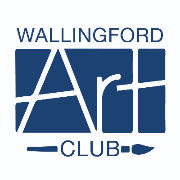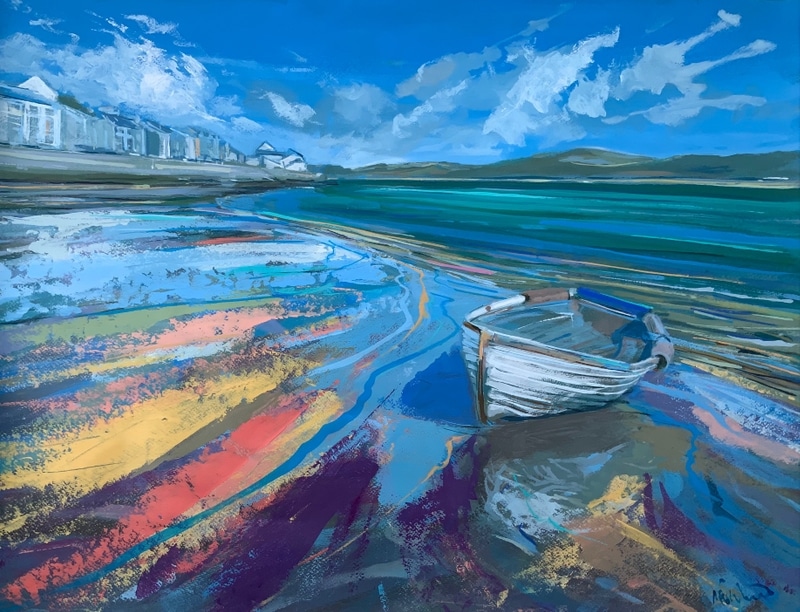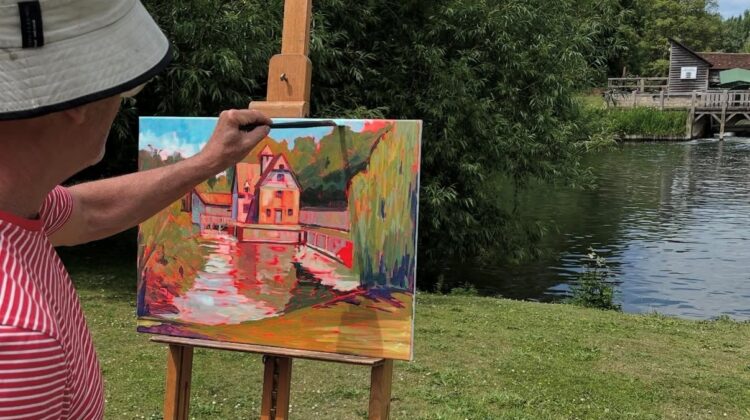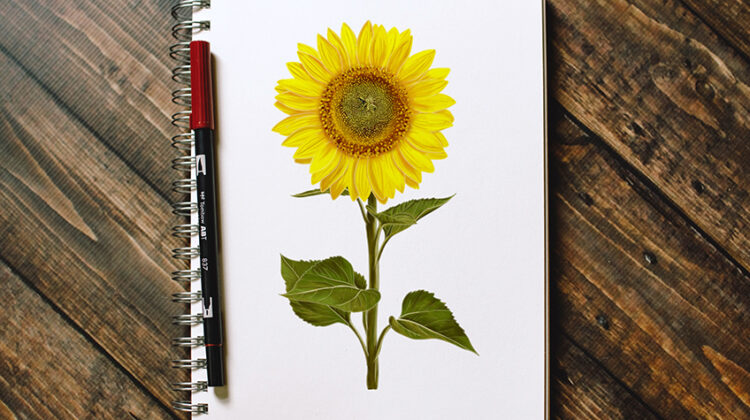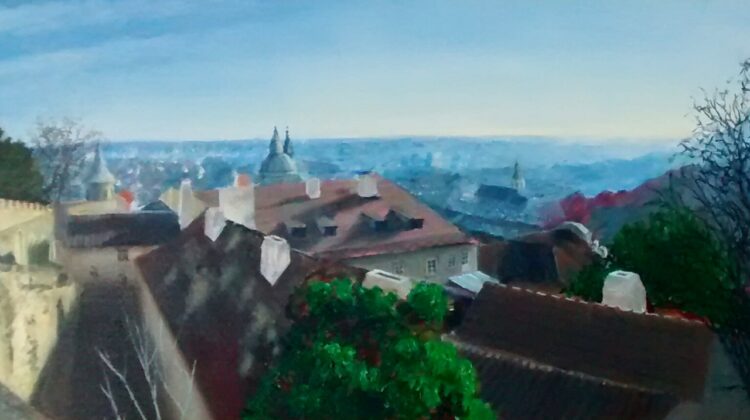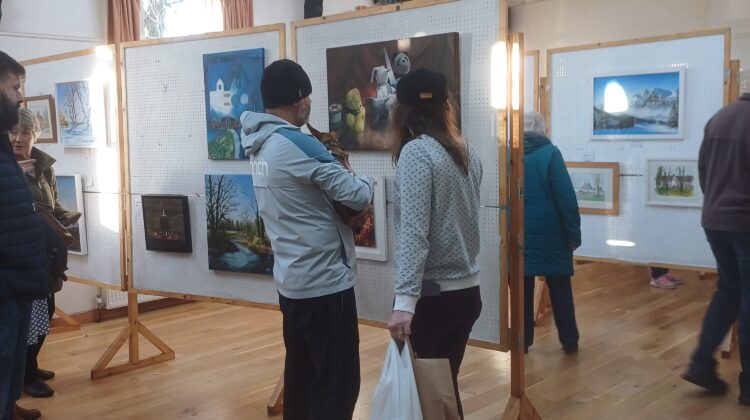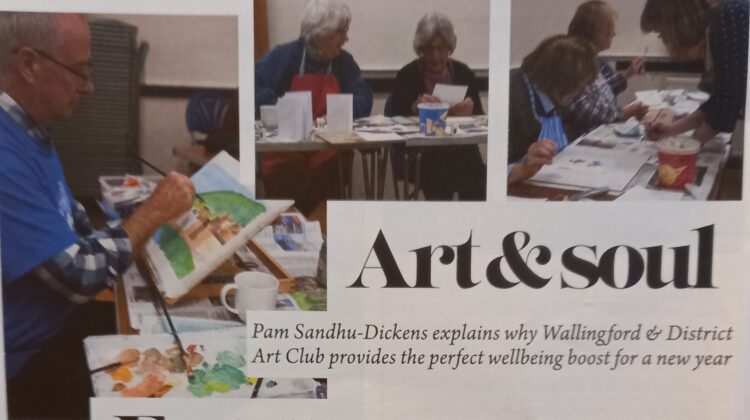Live workshop by Mark Warner
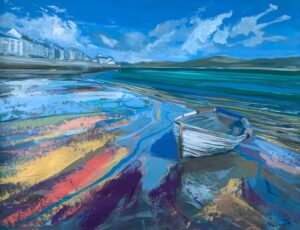
On 20th July, around 10 members joined artist Mark Warner in an all-day workshop to create an expressive seascape using acrylics. Mark is an experienced practicing artist and tutor, who works from his studio in Shropshire.
He emphasised the importance of drawing to his work, by showing us some wonderful sketch books of his travels in the UK and abroad.
The process – drawing
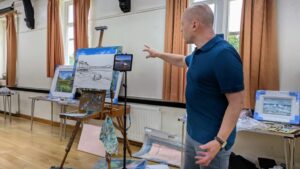 Most of us worked on watercolour paper, as suggested, covering it with a wash of sienna, so the painter didn’t have to ‘compete’ with the white of the paper. Working from a reference photo he supplied, he started by outlining the composition in light 2B or HB pencil, focusing on shapes and movement, rather than any details.
Most of us worked on watercolour paper, as suggested, covering it with a wash of sienna, so the painter didn’t have to ‘compete’ with the white of the paper. Working from a reference photo he supplied, he started by outlining the composition in light 2B or HB pencil, focusing on shapes and movement, rather than any details.
Sky and sea base layers
Next, we moved onto the sky and sea. Mark uses soft synthetic brushes, flat-edged and fairly large – 18 at this stage. He adds water to acrylics to build up soft layers of paint. He mixed cerulean and ultramarine, with white and later, some naples yellow. He mixes on the pallette and not on the paper.
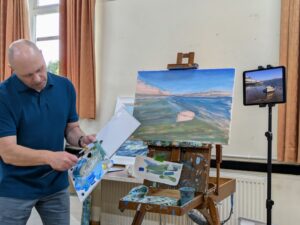 He uses the sides of the brush, working in side to side and sweeping upwards strokes to create movement. The sky was darker to lighter on the horizon. He then used this lighter colour in places on the sea and on the foreground, where the sky would reflect onto wet sand.
He uses the sides of the brush, working in side to side and sweeping upwards strokes to create movement. The sky was darker to lighter on the horizon. He then used this lighter colour in places on the sea and on the foreground, where the sky would reflect onto wet sand.
He added turquoise to the blue mix for the sea, again adding direction and movement, plus adding some more naples yellow to get greeny ‘streaks’.
Hills process
Using the same blues, he added a tiny amount of crimson to create a purple for the distant hills and filled them in, in blocks, to denote distant and closer hills and ridges, altering the colour to lighter, with white. Using downward strokes of the flat edge of a smaller brush, he ‘crispened’ the edges of the hills, adding more realistic indentations, rather than continuous smooth ‘humps’.
Houses and harbour process
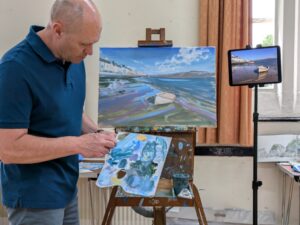 Using the same smaller (size 10), flat edged brush, he created the simple house shapes by making columns and crossways marks to denote the fronts, sides and roofs. He used white with a touch of the paler sky blue for the fronts, darker for the sides and prussian blue/burnt umber for the roofs.
Using the same smaller (size 10), flat edged brush, he created the simple house shapes by making columns and crossways marks to denote the fronts, sides and roofs. He used white with a touch of the paler sky blue for the fronts, darker for the sides and prussian blue/burnt umber for the roofs.
Creating green, he added trees behind the houses, and used this and the hills purple for the harbour wall, patches in the sea and foreground, and the shadow under the boat.
The boat process
Using white, naples yellow and pale sky blue he created lighter parts of the boat and the highlighting on the harbour wall. He added details and highlights to the boat.
Foreground and sea details
He added details in lighter blue, turquoise, and purple to the foreground, using broader sweeps of colour to denote movement in the foreshore. He then added more layers of all the colours used so far, using a palletee knife (or old credit card) to drag the paint across the surace and create a broken texture.
Using a rigger brush he added a paler blue horizon line and a small naples yellow beach area under the distant hills.
Clouds process
Then came the brave part. Mark is known for his dramatic and expressive cloudscapes and today was no different! He uses dry paint (no added water) and dry brushes – larger, flat edged ones and a rigger. He applies white with a little sky blue paint with the flat of the brush, scrapes it along and rolls the brush over to create fluffy, connecting clouds. The trick here I’ve found is not to overdo it, or you end up with too many symmetrical disconnected blobs!
He ensures there are larger and smaller areas of clouds, connected, and gets upward movement to show perspective. He uses the rigger to create ‘con trail’ sky marks. When dry he adds further areas of white to the cloud clusters, to denote closer clouds.
And voila, the finished picture! Mark did say that this was not finished in his eyes and he would add further layers in his studio later. Below is the photo of the painting done on the day and a finished one he did earlier.
The verdict
Everyone enjoyed the day and the expressive freedom it provided. Most said they wanted to work on their painting more, to refine it, as the key to Mark’s technique seemed to be getting layers and movement – which was jolly hard!
Below are a few of our attempts.
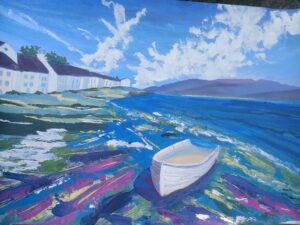
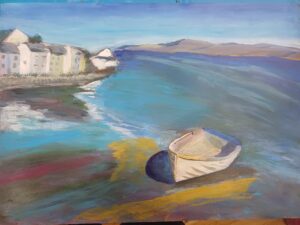
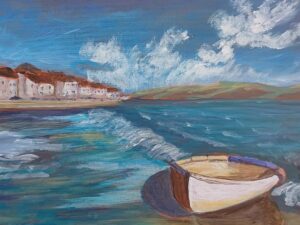
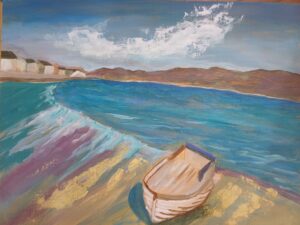
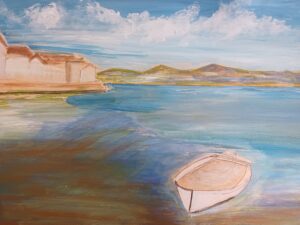
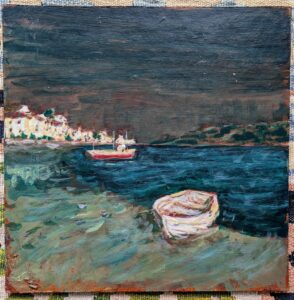
Mark runs painting workshops, as well as regularly tutoring painting holidays in the UK, France and Italy.
Website: www.brushmark.co.uk
